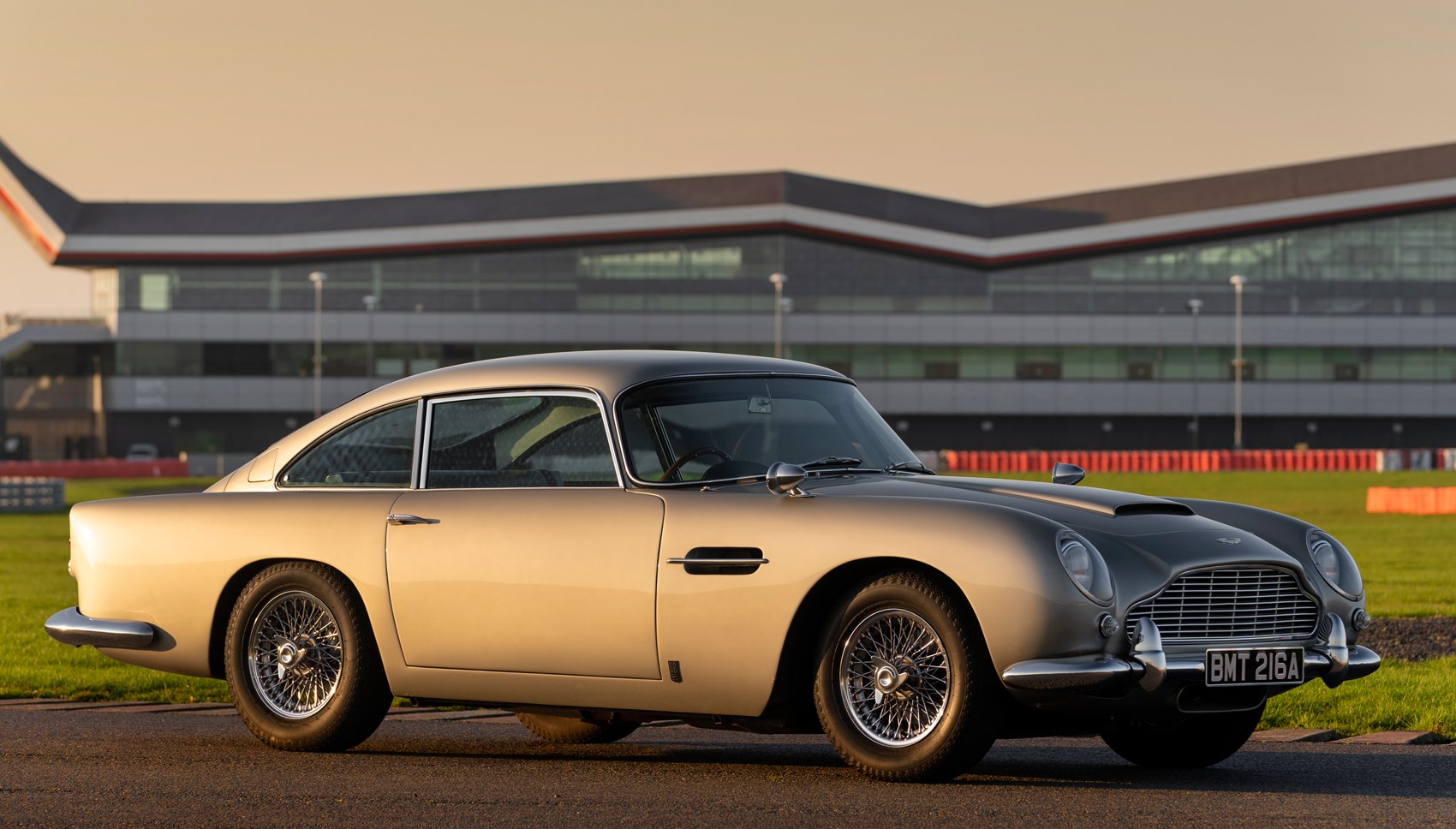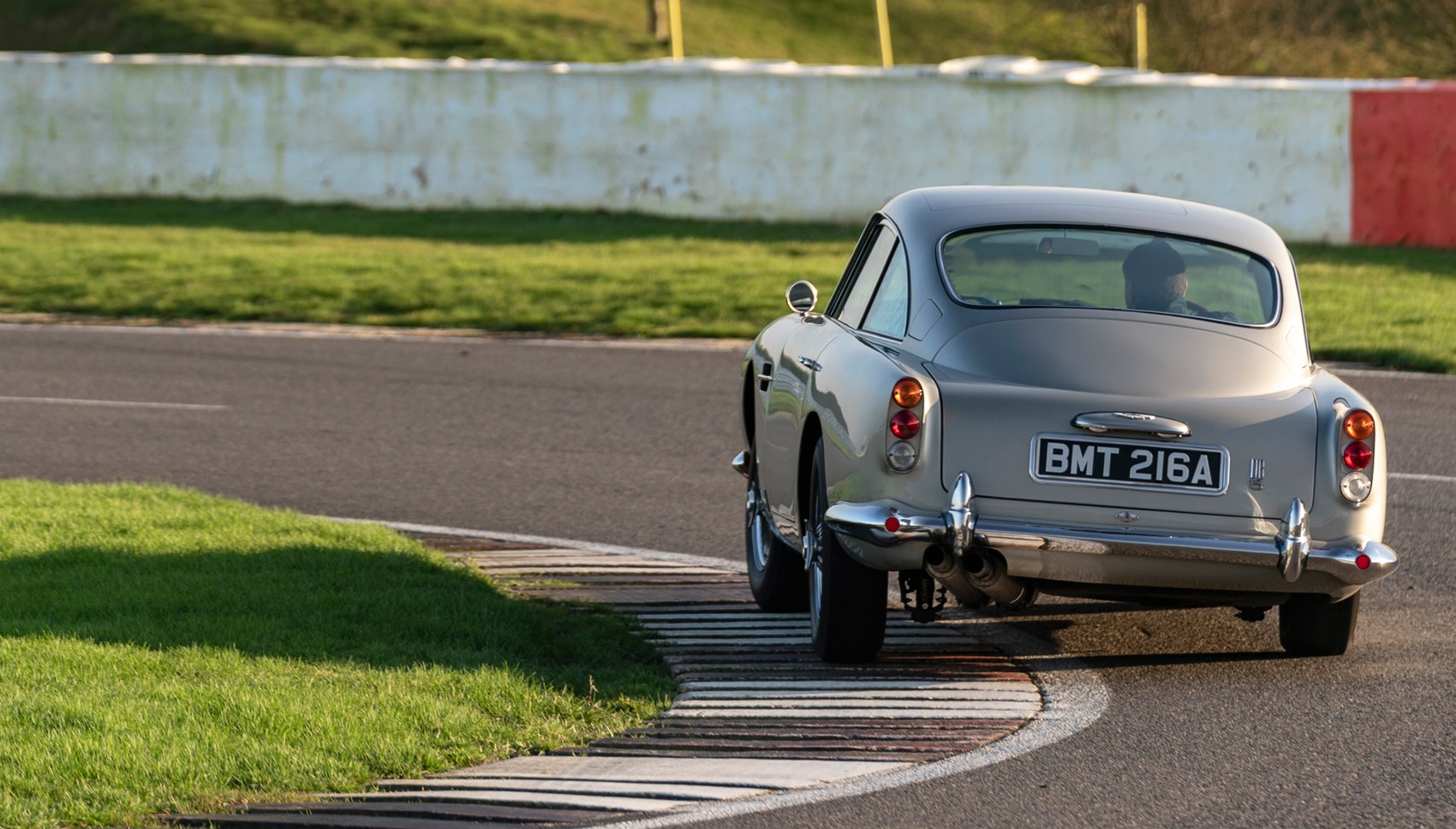► Aston’s most famous car driven
► Potent straight-six, manual ‘box
► Alluring GT is dripping with cool
I mention in the bullet point above that this, the Aston Martin DB5, is the brand’s most famous car but, in reality, it surely has to be the most famous car ever. Even someone who knows incredibly little about cars knows exactly what this is, almost entirely thanks to the bloke who’s usually in a sharp suit and into a spot of international espionage.
So, it’s a dream come true for a young lad who grew up watching Bond movies all his young life to get anywhere near a DB5 in Silver Birch, let alone get the keys to one. But let’s put things into perspective: it’s 2020 and this legendary grand tourer has a spoilt snowflake millennial at the wheel – so, what is Aston Martin’s legendary GT actually like to drive?
The DB5 in brief
Take a step back, first. The DB5, effectively built between 1963 and 1966, was part of the legendary DB series of cars, during Aston Martin’s many years under David Brown Limited ownership. It was an evolution of the DB4 (obviously), but even Aston Martin admits that the car was ‘virtually identical in appearance to the Series 5’ version of its predecessor. Change a headlight lens in a modern car and the brand responsible will claim it’s all new, these days…

Anyway, under the bonnet is a 4.0-litre naturally-aspirated straight-six producing 282bhp and 280lb ft, with that power sent through a five-speed manual gearbox (a three-speed auto was also available) to the rear wheels. It was the first time this engine was used by Aston Martin in a road car, having first seen service in the Lagonda Rapide (based on Aston’s DB4) and the Aston Martin DP215 – a gorgeous Le Mans endurance racer.
An original brochure for the DB5 claimed it was one of the fastest cars in the world at the time, with a top speed that ‘exceeds 150mph’, even if Aston’s own website lists the top speed as 142mph.
There was a Vantage-spec engine for it, producing a more potent 325bhp and a convertible, too. And, while it’s featured in other shows and movies, the DB5 is the quintessential James Bond car. It’s been in Goldfinger, Thunderball, GoldenEye, briefly in Tomorrow Never Dies and every single one of Daniel Craig’s movies including 2021’s No Time To Die.
How is it inside?
What strikes you first of all is just how well-tuned the driving position is, even for a lanky 6’3” bloke. There aren’t any protruding side bolsters on the seat hemming you in place, but the padding is so soft you just sink into the worn leather instead. Visibility is tremendous, even with the shallow glasshouse and tiny rear-view mirrors.

The gorgeously tactile wooden-rimmed wheel is absolutely enormous in terms of diameter and, conversely, the pedal box is about half the size of a modern car. So, while you still have somewhere to put your left foot, the skinny pedals naturally aren’t entirely compatible with fat modern trainers. Should’ve worn a neat pair of Oxfords instead.
But what a place to be. That gorgeous ‘old car’ smell of worn leather, the sliding air-con levers, and quite possibly the daintiest gearknob in the known universe. Naturally this one’s missing Sean Connery’s gadgets from Goldfinger but, if you’re into that sort of thing, you can ask Aston Martin to make one for you.
Enough pre-amble – what’s it like to drive?
It’s an interesting dichotomy between being hard work and relaxed when you’re on the move.
That gorgeous straight-six is at the forefront of the DB5’s entire driving experience; it’s just so chilled out, burbling and humming away, unstressed even if you’re giving it some. ‘More, sir? Why, yes, of course’ is its default response to heavy throttle inputs, developing speed with obliging purpose, if no dramatic urgency. The DB5 is plenty quick enough, even if a seven-second 0-62mph sprint time is bettered by most hot hatches these days. If you relax and drive it like the grand tourer it’s designed to be, you synchronise with it much better.

Cornering is very entertaining, though probably not for all the right reasons. The first 1/8th of a turn is light, almost like it’s designed for those pretend driving shots you see in classic movies, but then weights up tremendously. No wonder Bond was in such good shape, he barely needed an arm workout beyond just his daily commute. But, while the rack is extremely heavy, it’s adjustable; the heavier the steering feels, the more minutely your inputs can be mid-corner.
Then there’s the ride. Sumptuous on the straight-and-narrow, absorbing so very many kinds of lump and bump with grace – just like a GT should do. It’s a reminder that even a modern DB11 or DBS Superleggera, with its much more sophisticated suspension geometry and adaptive damping, can’t match its classic (albeit much smaller-wheeled) predecessor for ride softness. But this has a tremendous downside; body roll. Couple a heavy steering rack with a soft suspension setup and hilarity ensues when attacking corners – this thing rolls more than Snoop Dogg does. What also raised an eyebrow is the considerable amount of wind noise; soundproofing has come a long way in the decades since this was a new car and it shows – there was a lot of bluster over the front wings at speed. Not irritating, just noticeable.

The biggest contrast between appearance and application has to be the gearbox, though. Its tremendously diminutive and light clutch pedal and Twiglet-thick gear shifter coupled with the heavy-handed shift action required for smooth operation is an interesting blend. The spacing between gears is tiny, so much so that even I admit there were a couple of mentally mislabelled gear changes (‘is that fourth?’). But, once you’re in sync, it’s a joy to have such purposeful tactility in your palm.
Aston Martin DB5: verdict
For the ‘old car’ uninitiated, the DB5 is a welcome education. It’s a lesson in just how wrapped up in cotton wool modern cars have become with power-assisted this and hot-and-cold running safety assistance.
Once you’re attuned to its nuances – the hardcore steering heft, the roly-poly suspension setup and that suave straight-six – all come together in the end. It’s powerful, smooth, classy and it will charm the pants off you. No wonder James Bond likes it so much.
Check out our Aston Martin reviews